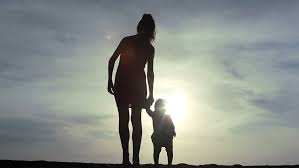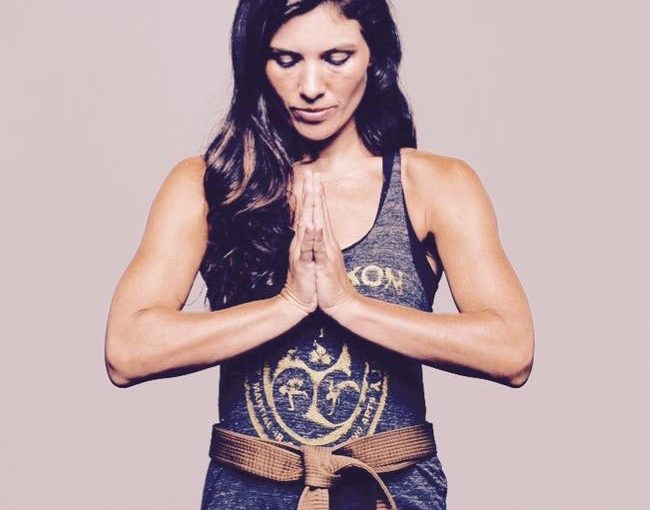Erik: I think that much of self-defense can be thought of in terms of boundary setting. IMO, boundary setting is comprised of the three elements of Respect, Communication, and Enforcement. Most people think that all physical self-defense is Enforcement.
But I think physical self-defense can be divided into two overlapping categories:
- Physical actions that are primarily Communication.
- Physical actions that are primarily Enforcement.
Defense actions that are “resistance” based are really Communication. These actions send a message of non-compliance. But Enforcement requires actions that go beyond resistance and actually “force” resolution by injuring and/or disabling the attacker.
I think that many times WSD instructors and students confuse these two different types of physical actions. For example, Resistance/Communication is only effective against lowly motivated attackers who are looking for victims that will not resist. But a highly motivated attacker will not be stopped by Resistance/Communication. This type of person must be dealt with through the use of true Force/Enforcement.
Problems come about when the Defender employs Resistance/Communication when she should be using Force/Enforcement or the Defender uses Force/Enforcement when Resistance/Communication would have been sufficient.
Therefore, effective self-defense requires knowing the difference between Communication and Enforcement and when which type is required.
What are your thoughts on what I said? Can you think of specific examples of what I am referring to?
Angela: I agree completely and really like the language you’ve coined around this. I think so often when we are talking about Women’s Self Defense, we have this idea of being a badass on the streets and being able to “I wish a motherfucker would” stare down an attacker, when the reality is, most attacks will happen from men you know. AKA, highly motivated, or driven by emotional content.
So, how do we teach this in WSD classes/ workshops? Like any type of Self Defense or Martial Arts that is taught, there are layers to the teaching. For the foundational classes or “one off” workshops, in Women’s Self Defense, I think the most important take away is boundary setting through physical intensity and becoming more familiar with limbic brain processes.
For those who continue to train and become more serious, the key word is “stress inoculation”. I do not think this is just physical, although I do think physical is the “gateway.” Physical, mental, emotional training is all connected. For example, I have trained in Muay Thai, Jiu-Jitsu and wrestling for many years. I think I’m highly competent in the physical movements during training. That said, I still struggle with freezing if my brain goes into a limbic state. Consistent training and stress inoculation in a safe and controlled environment has greatly helped me to access the ability to act in these situations instead of freeze, but I do still have a lot of work to do.
Circling back to your question, I think we must start with the psychological realm (also knowing that when we are talking about “Women’s Self Defense” we must take into consideration different cultures, socio economics, age, well/sick, etc., and not lump all women into one category)
How do we live our everyday lives? This needs to be brought to light… day one… through some type of stress inoculation.
Once a woman has entered this realm, then I think introducing weapons into the equation is necessary, since 99 percent of the time, women will not be successful in “beating up” a larger man even if he is “untrained” and she is “trained”. It’s just bullshit to think that can happen. It’s a Hollywood mentality.
I do believe learning to fight and becoming stress inoculated is the first step, because without this, it’s not realistic to add on a weapon. If I don’t understand “push/pull” energy, if I freeze when I’m hit, if I lay down and die, a weapon will certainly not save me.
I think it is extremely important and intellectually honest to make the distinction between lowly and highly motivated attackers. This is why I think it is bullshit to teach “moves” in a WSD workshop or class and insinuate these “moves” will save you. This work is much deeper and complex than earning moves. I’m going to bring it back to working with psychology (especially, limbic response) through physical, emotional and mental stress inoculation.
Erik: I think that honesty and authenticity are two qualities that are missing in much selfdefense instruction.
I have a theory that instinctive movements are influenced greatly by the person’s emotional state. And a certain group of movements are consistent with the emotion of FEAR and another is consistent with the emotion of ANGER. Many of these movements are opposites. For example, the emotion of anger creates movements that bring someone closer to the person that she is afraid of. I call these IN Movements. While the emotion of fear drives the person to want to move away. I call these OUT Movements.
When you consider many physical self-defense techniques, you will notice that many of the technically effective ones require the defender to “attack the attacker” by closing/shutting him down or engaging in close quarter strikes, joint locks or chokes. What this means is that the defender needs to move closer to the person that she fears. These movements are not consistent with the defender’s primary emotion of fear. They are consistent with anger.
In other words, regardless of the theoretical effectiveness of the technique or how well the student can perform the technique when not fearful. She will most likely not be able to perform these techniques when in a fearful state. On the other hand, she is more likely to execute techniques that are consistent with being afraid such as kicking and pushing away in order to create the opportunity to escape.
For example, making a fist and punching is an anger action. Whereas an open-handed push away is more likely to be a fear action. This is not a question of which movement is more effective. It is a question of which movement is more likely to be executed given the projected emotional state of the defender. If the action is intended to be used by a female defender against an attempted stranger attack, it is highly likely that fear will be woman’s primary emotion. Therefore, those techniques that involved the woman pulling IN her attacker to choke/gouge/bite him are unlikely to be carried out, regardless of their underlying effectiveness.
It is for this reason that WSD self-defense instructors are constantly trying to get women to “get mad” when simulating a self-defense scenario. Or they use the analogy of the “protective mother” fighting to save her children. The instructors intuitively recognize that anger is an essential element for success in their fighting methodology. I think these instructors also need to understand is that they need to teach an alternative methodology that is suitable for the fearful defender too. It is not enough to only provide students with an Anger Toolbox. They must also have a Fear Toolbox. And students need to understand how their emotions are likely to override the trained movements that are not consistent with their emotional state.
here are small group of movements that are consistent with both the anger and fear state. I think that the hammer fist striking qualifies because you can use it in anger and also in fear to hit someone away with or without a weapon.
What are your thoughts on IN and OUT Movements?
Angela: I am in complete agreement with this theory and from my experience in teaching Women’s Self Defense, most women who have been through traumatic experiences, express anger and rage when training, because when the actual attack took place, they froze in fear. They use mottos like “never again mother fucker (s)” Anger is a very powerful energy and when used properly can fuel a sense of fearlessness needed to create “IN” movements.
I also think it is important to use anger as a tool for women to find voice and authenticity in the world. A woman who has been told to shut up and look pretty her whole life can find a lot of power through physical modalities that ask her to become bigger, aggressive and not selfconscious. That said, as someone who is a fighter and struggles with anxiety, I know first-hand that when put in a fight or flight situation, where huge adrenaline dumps are a factor, my fear or “OUT” movements are dominant.
In my most recent fight, I was able to override anxiety, by changing my eyes to “mean eyes” and sounding off in a very scary way every time i would strike. These “anger” actions made me feel more powerful, therefore actually physically exhibiting more power. This tactic worked beautifully in round one, but in the second round where her forward pressure didn’t stop and I was met with a situation that I had not planned for, fear became my dominant response, my eyes changed and I had more freeze responses, not able to think or take action. After round two in the corner my coach sat me down and basically slapped me awake with his words, “What the fuck are you doing? You are not scared of her. Change your eyes right now.” With just the coaching and shifting my state through my gaze and energy, I was able to translate the fear back into anger which felt more powerful.
These shifts take time, and self-awareness practice. I think this is vital in teaching women’s self defense. How do we, or can we in a limbic state, choose how you want to show up? What are tools that can get us there? Changing your eyes from deer in headlights to slits? Changing facial expressions and posture?
I think we start here and then move to other physical techniques that address the reality in an attack most women who are untrained or very little trained are going to have the natural response of fear.
Erik: In the example of your ring fight. When you are feeling Angry what images flash into your mind? And when you are feeling Fearful, how do the images change?
What do you “see” happening, if only for a moment?
By images, I mean rapid flashes of the future within the context of the fight. These images are part of your emotional mind communicating with you.
Angela: “In the example of your ring fight. When you are feeling Angry what images flash into your mind?”
Blood. Lion with sharp teeth devouring its prey. Goddess Kali. Predator animal that kills without concern or thought for another’s humanity.
“And when you are feeling Fearful, how do the images change?”
I see myself scared…more as a little girl. Tender. tears. an animal who plays dead for survival purposes.
“What do you “see” happening, if only for a moment?”
First round of last fight. Saw me as the predator. Kill shots. Dominating. Out for blood. Invincible
Second round of last fight: Saw her crazy eyes. Constant pressure forward without technique, but just animalistic aggression. I saw myself getting mentally tired, because I was afraid that physical I could gas out if I was that aggressive.
Third round of last fight: I saw me losing and didn’t want that outcome. I still didn’t go back to the kill switch, but I was not running. I saw me winning because I wanted to.
“By images, I mean rapid flashes of the future within the context of the fight. These images are part of your emotional mind communicating with you.”
When angry: Predator animal. Wild animal. Fangs out. ability to kill without concern for humanity or feelings
When afraid. Myself as a little girl. hiding. running. not trusting in my own capacity to fight.
CRGI would like to express our sincere thanks to Angela for this interview.






